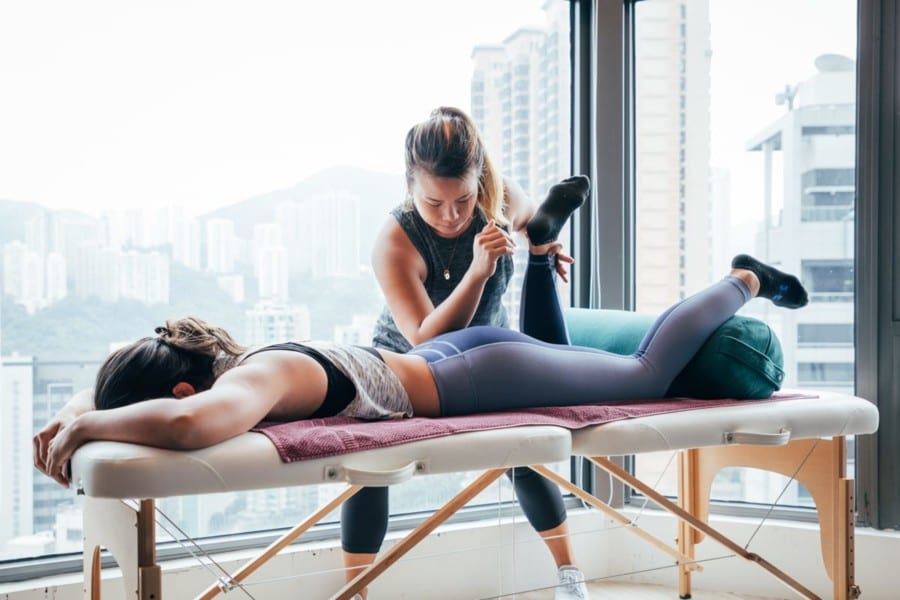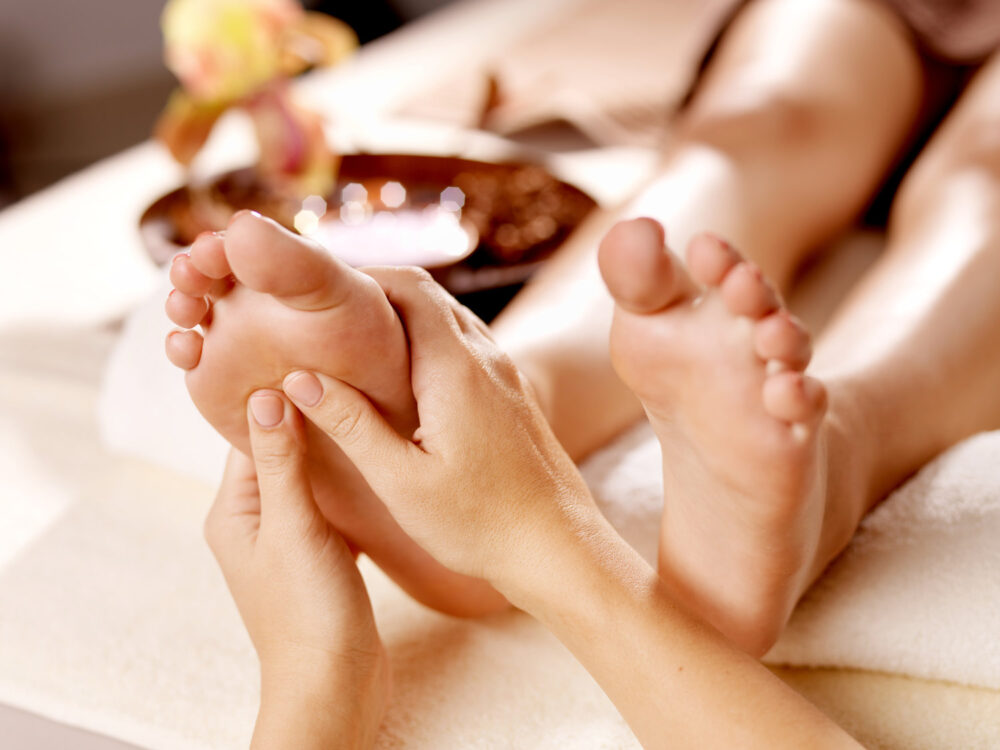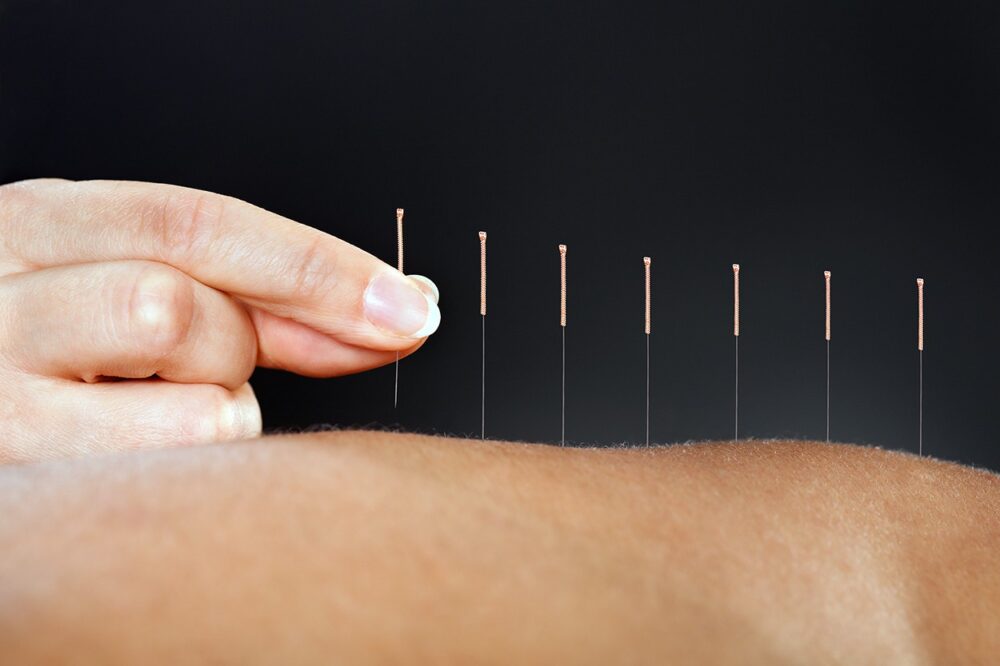Many different problems have been treated with massage for many years. The first massage therapy is believed to have been introduced in 3000 BC.
The benefit of a massage is that it reduces, increases metabolism, stress, and muscle tension, regulates blood flow, ensures joint mobility, and relieves pain. It can also be highly beneficial to your physical well-being and mental health.
Types of massage therapies
There is a variety of massages available. Every type of massage serves a different purpose. Here’s a quick guide to help you decide which type to pick:
1. Aromatherapy Massage

Source: massagefloat.com.au
The use of essential oils is part of aromatherapy massage. Traditional cultures have been using essential oils since ancient times. Massage therapy using essential oils is popular among those who need emotional healing. There is scientific evidence that it enhances sleep, improves mood, and alleviates anxiety or depression symptoms. Massage can also relieve tense muscles and reduce pain.
Aromatherapy uses essential oils and Swedish massage techniques. A diffuser is used to inhale essential oils while you are being massaged, eventually absorbing them into your skin. Various essential oil blends for massage are also used. Click here for more information. This therapy is mainly focused on the head, shoulders, and back. Aromatherapy massages last between 60 and 90 minutes.
You can also gift your loved ones their favorite essential oils in custom cosmetic packaging boxes.
2. Deep tissue massage
In deep tissue massage, the muscles and connective tissues are worked at a deeper level.
In this massage therapy, the therapist presses his or her fingers into the skin slowly. The therapist will use slow, firm strokes to massage deep tissues. Muscle knots may be targeted specifically. Known as myofascial trigger points, muscle knots are specific points of tension within a muscle fiber. It is still unclear what causes these knots, but they may occur as a result of overuse, such as from playing sports or poor posture. Since these knots can be painful, deep tissue massage relieves them and provides pain relief. There are some studies that suggest that deep tissue massage is beneficial for this purpose.
3. Sports massage

Source: thehoneycombers.com
Those who exercise or play sports regularly benefit from sports massages by improving the health of their soft tissues. This includes the manipulation of the following soft tissues:
- skin
- tendons
- muscle
- fascia
- ligaments
The muscles and other soft tissues can become overly stressed after sports and regular exercise. The goal of sports massage is to prevent or relieve injury, correct muscle imbalances, and enhance muscle performance by working on each of these soft tissues.
The evidence suggests that sports massage can help with recovery after repetitive muscle injuries. Although the results of sports massage are less conclusive, some evidence suggests that it is also capable of promoting muscle performance.
4. Trigger Point Massage
As its name implies, Trigger Point Therapy targets a specific point on the body. It usually targets the point where a person is experiencing pain. It involves sliding and pressing different methods in order to apply pressure on the area.
Pain is relieved from different points on the body using this method. It is important to inform the masseuse beforehand of the trigger points. There are now MRI scans associated with this type of massage as well so that the area of pain can be identified precisely. This has a profound effect on the neuromuscular junction. The duration can vary between 10 minutes and an hour.
5. Reflexology Massage

Source: baofootspa.com
The term “Zone Therapy” is also used for a Reflexology massage. A massage like this is based on the idea that your whole body is connected to your hands and feet. Naturally, the hands and feet are responsible for controlling the body’s reflexes. Every part of the body has corresponding points on your hand. Massage or pressure is applied to these points. Mild pain can be treated with this but not chronic or intense pain.
6. Myofascial Release Therapy
Unlike other types of massage therapy, Myofascial Release Therapy can be completed by a person without outside assistance. Myofascial release is the process of releasing the fascia, a layer of fibrous connective tissue that lies above the muscle and under the skin. If our fascia is bunched, we feel muscular tightness at the surface level, not below. In most cases, we feel muscle tightness only because of our fascia, as it is responsible for allowing us to move and hold different positions.
Myofascial release can also be classified as active or passive. Active release therapy involves the client tightening up the affected areas with the help of a therapy instrument. When the muscles are completely relaxed, passive release therapy is used and can be performed during a trigger point massage and soft tissue mobilization.
Anyone with tight muscles can take advantage of myofascial release sessions, which generally last up to half an hour. Although somewhat painful when done directly by a massage therapist, myofascial release serves far more direct benefits than a classic massage when it comes to soothing tight muscles.
7. Acupuncture

Source: canopyhealth.com
An acupuncture treatment involves the insertion of needles at trigger points during a massage. Originally, it was a form of ancient Chinese medicine and is commonly used to relieve pain. Many, however, consider acupuncture to be a pseudoscience since its methods are not scientifically proven.
It is also not believed that acupuncture has long-term benefits. Nevertheless, many people still turn to this practice for muscular pain and stiffness relief in the lower back, shoulders, and knees. You can get acupuncture in most clinical settings and massage parlors, provided the practitioner is skilled and the needles are clean.
Conclusion
So, these were some of the most popular massage therapy techniques that are practiced in almost all parts of the world. Each therapy serves different purposes. We hope you found the one that you want to get done from the list mentioned above.
















